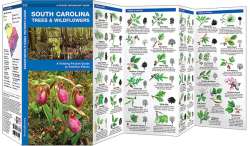

More than 30 endangered and threatened species, including red-cockaded woodpeckers and indigo snakes, rely on longleaf pines for their habitat. Restoration of longleaf pine forests has become a major conservation priority in recent years though. Rather than replanting the longleaf pines, foresters replaced them with faster-growing pines that would produce more short-term economic benefits. Most of the longleaf pines were gone by the 1920s, and they had a hard time coming back on their own because of fire suppression. The lumber, which is of exceptional quality, was used for building ships and railroads. Forests of longleaf pines were cleared to make space for development and agriculture. This tree was once so abundant that it seemed like an inexhaustible resource to early settlers. Longleaf pines, which once covered an estimated 90 million acres, now cover less than 3 percent of their original range. These slow-growing trees live for over 300 years, and they may take up to half that time to reach their full size. The lifespan of a longleaf pine spans several centuries.

Both mature trees and grass-stage specimens are fire-resistant. After going through the grass stage, longleaf pines begin to grow in height. During the grass stage, the longleaf pine starts to develop its central root, called a taproot, which will be up to 12 feet (3.7 meters) long at maturity. The real work, however, is going on underground. Rather than spending its first few years growing in height, the longleaf pine goes through a grass stage.įrom the surface, the grass-stage plant appears to be a large clump of needles that grows very little. The seeds that are able to take root undergo an interesting life cycle that differs from most other conifers. When fire is suppressed, ground cover buildup prevents seeds from reaching the soil, and they can’t germinate. Historically leaf litter and debris were cleared away by forest fires that were sparked during lightning storms. When they fall to the ground, they must come in contact with soil to germinate. Longleaf pine seeds develop in cones and are dispersed by wind.


 0 kommentar(er)
0 kommentar(er)
